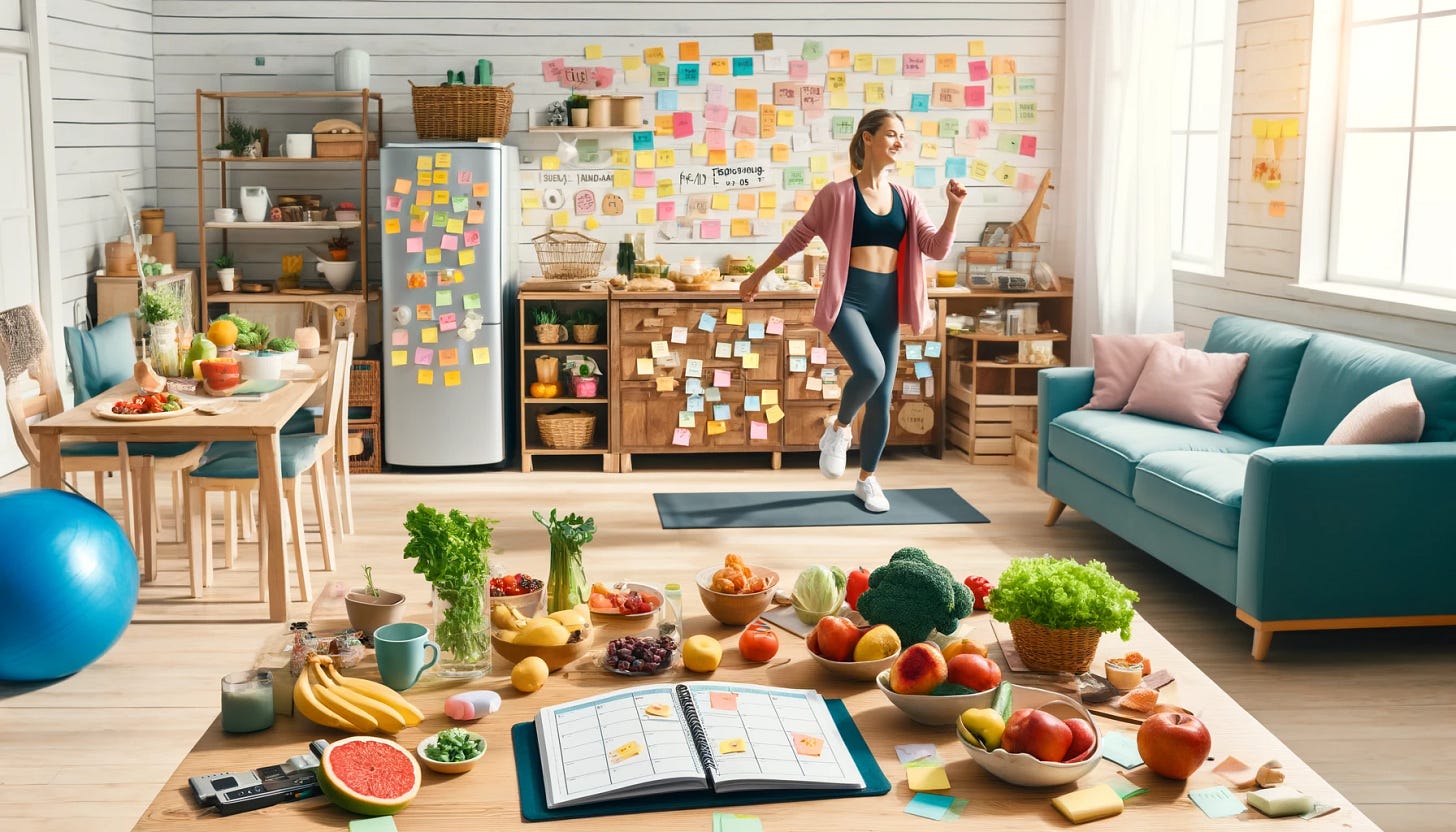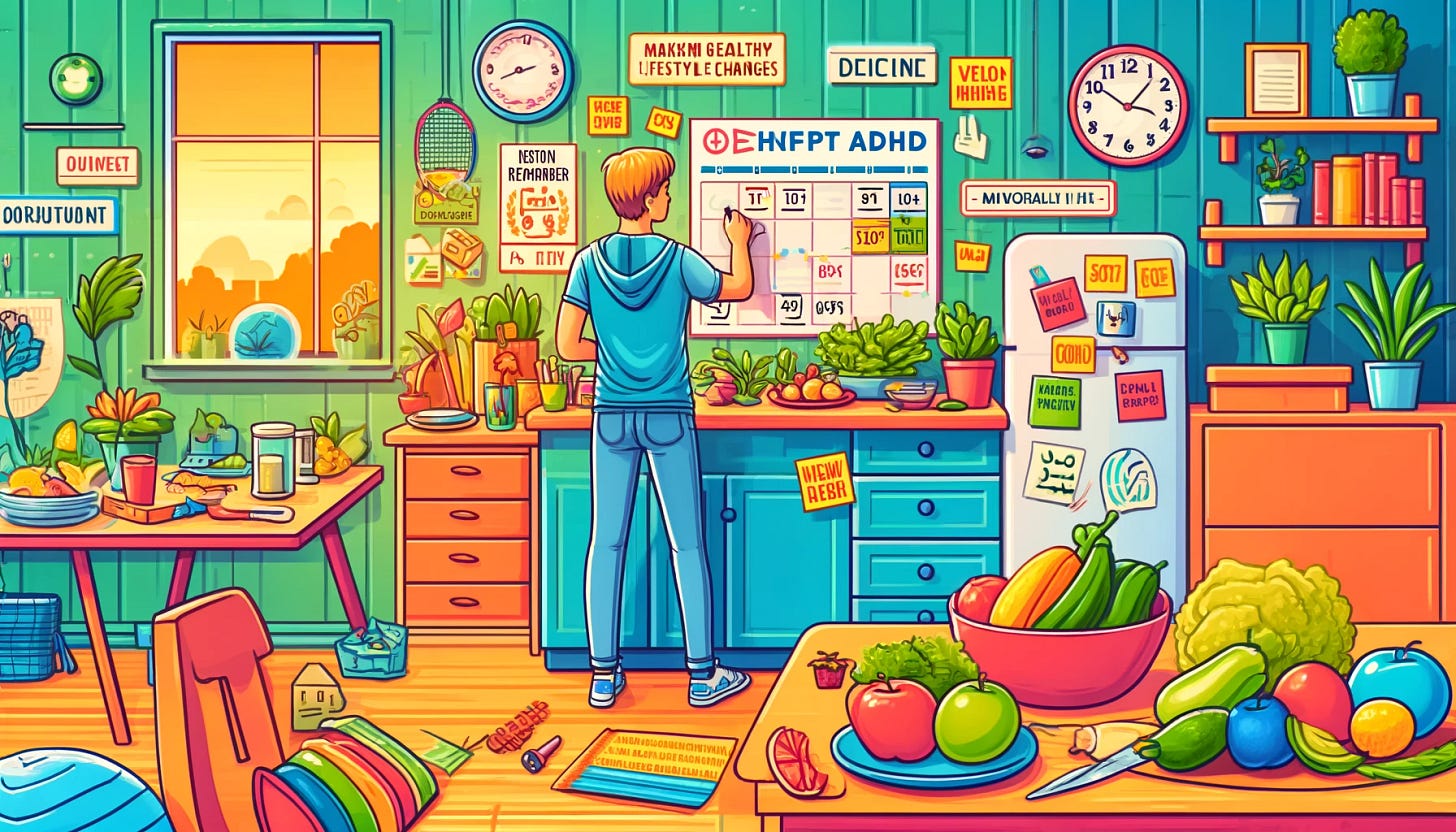Making Sustainable Lifestyle Changes for Adults with ADHD
Living with ADHD as an adult presents unique challenges, especially when it comes to making and maintaining healthy lifestyle changes. While knowledge of ADHD and its impact is often extensive among those diagnosed, translating this knowledge into sustainable habits can be incredibly difficult. Many adults with ADHD have likely encountered repeated failures in their attempts to establish regular exercise routines and healthy eating habits. This article will provide practical strategies, grounded in an understanding of ADHD, to help you overcome these hurdles and build a healthier lifestyle that sticks.
Understanding the ADHD Brain and Lifestyle Changes
Before diving into specific strategies, it's crucial to understand why traditional approaches to lifestyle changes often fail for adults with ADHD. ADHD affects executive function, the brain's ability to plan, prioritize, and execute tasks. This can lead to difficulties in:
- Maintaining focus and motivation: The ADHD brain craves novelty and can quickly lose interest in repetitive tasks, such as daily exercise or meal planning.
- Impulse control: Managing impulses can be challenging, making it harder to resist unhealthy food choices or the urge to skip a workout.
- Time management: Poor time management can result in irregular schedules, missed workouts, and last-minute unhealthy meals.
Given these challenges, the key to success lies in creating a structure that works with your ADHD, not against it.
Setting Realistic and Achievable Goals
One of the most common pitfalls is setting overly ambitious goals. It's easy to get swept up in the excitement of a new plan, only to burn out quickly. Here’s how to set goals that are realistic and achievable:
1. Start Small: Begin with small, manageable changes rather than a complete overhaul of your lifestyle. For example, aim to exercise for just 10 minutes a day or add one serving of vegetables to your daily meals.
2. Be Specific: Vague goals like "eat healthier" or "exercise more" are hard to achieve. Instead, set specific goals such as "walk for 20 minutes every morning" or "replace sugary snacks with fruit."
3. Set Short-Term Milestones: Break down your goals into short-term milestones. This not only makes them more achievable but also provides a sense of accomplishment that can keep you motivated.
4. Use SMART Goals: Ensure your goals are Specific, Measurable, Achievable, Relevant, and Time-bound. For example, "I will walk for 20 minutes every day for the next two weeks."
Leveraging Your Strengths
Living with ADHD means you have a unique set of strengths that you can leverage to achieve your goals. Here are some ways to use your ADHD traits to your advantage:
1. Harness Hyperfocus: Use periods of hyperfocus to plan and prepare for your lifestyle changes. Spend time researching healthy recipes, creating workout plans, or organizing your environment to support your goals.
2. Embrace Novelty: The ADHD brain thrives on novelty. Keep your exercise routine exciting by trying new activities like dancing, hiking, or joining a sports team. Similarly, experiment with new healthy recipes to keep your diet interesting.
3. Seek Immediate Rewards: Immediate rewards can be highly motivating for those with ADHD. After a workout or healthy meal, treat yourself to something you enjoy, such as watching an episode of your favorite show or spending time on a hobby.
Creating a Supportive Environment
Your environment plays a significant role in shaping your behavior. Creating a supportive environment can reduce the effort required to make healthy choices. Here’s how to set yourself up for success:
1. Declutter Your Space: A clutter-free environment can reduce distractions and stress, making it easier to focus on your goals. Start with small areas like your kitchen or workout space.
2. Organize Your Kitchen: Keep healthy foods visible and easily accessible. Store unhealthy snacks out of sight or don’t buy them at all. Pre-cut vegetables, prepare meals in advance, and use clear containers to make healthy choices the easy choice.
3. Create Exercise Zones: Designate specific areas for exercise. Whether it's a corner of your living room or a spot in your backyard, having a dedicated space can make it easier to stick to your routine.
4. Use Visual Reminders: Use sticky notes, charts, or apps to remind yourself of your goals and track your progress. Visual cues can help keep you focused and motivated.
Building Routine and Structure
For adults with ADHD, routine and structure can be a game-changer. While flexibility is important, having a basic framework can help you stay on track:
1. Schedule Your Workouts: Treat exercise like an appointment that you can’t miss. Set a specific time each day for physical activity and stick to it as much as possible.
2. Plan Your Meals: Meal planning can help you avoid unhealthy choices when you're hungry and short on time. Set aside time each week to plan your meals and snacks.
3. Use Alarms and Timers: Set alarms to remind you when it’s time to exercise, eat, or take a break. Timers can also help you stay on track and manage your time effectively.
4. Create Rituals: Establishing rituals around exercise and meals can make these activities more enjoyable and automatic. For example, start your day with a morning stretch routine or end your evening with a relaxing walk.
Overcoming Common Obstacles
Even with the best plans, obstacles will arise. Here are strategies to overcome common challenges:
1. Dealing with Boredom: If you get bored easily, mix up your routines. Try new recipes, alternate different types of workouts, or find a workout buddy to keep things interesting.
2. Handling Impulses: Impulse control can be tough. Keep unhealthy foods out of the house, plan your meals and snacks, and use distraction techniques when you feel tempted to skip a workout or eat something unhealthy.
3. Managing Time: Poor time management can derail your efforts. Use planners, apps, or timers to keep track of your schedule and ensure you allocate time for exercise and meal prep.
4. Staying Motivated: Motivation can fluctuate. Set short-term goals, reward yourself for progress, and remind yourself of the benefits of a healthy lifestyle.
Seeking Professional Support
Sometimes, professional support can make a significant difference in achieving your lifestyle goals. Here are some professionals who can help:
1. ADHD Coaches: An ADHD coach can help you develop personalized strategies, set realistic goals, and stay accountable.
2. Dietitians: A dietitian can provide tailored advice on healthy eating, meal planning, and overcoming dietary challenges specific to ADHD.
3. Personal Trainers: A personal trainer can create a customized exercise plan that fits your preferences and abilities, and provide motivation and support.
4. Therapists: A therapist can help you address underlying emotional or psychological barriers to making lifestyle changes.
Embracing Self-Compassion
Finally, it's essential to practice self-compassion. Making lifestyle changes is hard for anyone, and it's even more challenging when you have ADHD. Here are some ways to be kind to yourself:
1. Acknowledge Your Efforts: Recognize and celebrate your efforts, even if you don’t see immediate results. Every small step counts.
2. Accept Setbacks: Understand that setbacks are a normal part of the process. Instead of getting discouraged, view them as learning opportunities.
3. Be Patient: Change takes time, especially when you're working against ingrained habits and neurological differences. Be patient with yourself and the process.
4. Practice Mindfulness: Mindfulness practices, such as meditation or deep breathing, can help you stay present and reduce stress, making it easier to stick to your goals.
Conclusion
Making healthy lifestyle changes as an adult with ADHD is a challenging but achievable goal. By understanding your unique strengths and challenges, setting realistic goals, creating a supportive environment, building routine and structure, and seeking professional support, you can develop sustainable habits that enhance your well-being. Remember to embrace self-compassion and celebrate your progress along the way. With persistence and the right strategies, a healthier lifestyle is within your reach.


